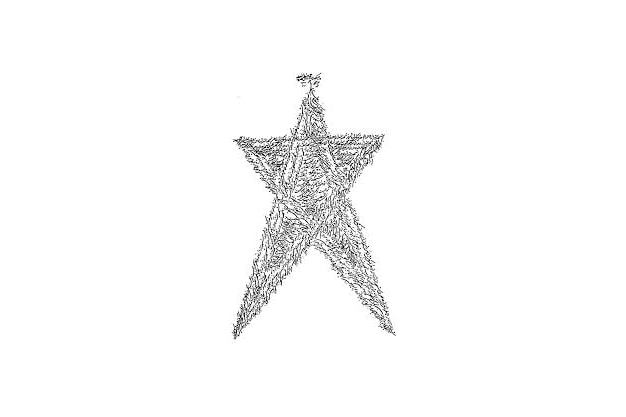
The Bahá’i symbol has been used as an important element of identification of the Bahá’i faith. To begin with, the name of the faith is derived from Bahá’i, which is considered the greatest name— the name of God. The name itself has become commonplace in Baha’i tradition such that it is the root word of many other words and names. The name itself means ‘glory’. Subsequent derivatives obtain their meanings from the word. For instance, Bahá’i (means a follower of Bahá) whilst Bahá’u’lláh refers to God’s glory.
However, the usage of the name, as rendered by the corresponding calligraphy as a symbol, has resulted in a certain degree of caution being issued in regard to the usage of the name. This is because the symbol signifies the name of God and His messenger. It is only faith that such a symbol would be regarded with reverence.
Principally, two Bahá’i symbols are associated with the faith: 5- pointed star and the 9- pointed star. This article shall consider the former symbol at length because it summarily represents the religion while the later represents perfection and the messengers of God. This is the fiver pointed start, haykal, which simply means, ‘temple’ in Arabic. Often, depictions of this symbol are rendered in duplicate to imply a twin existence.
Origin
The five pointed star is referred to as the haykal in the Bahai’i faith. It is the chief symbol of the faith. Haykalis a derived word from the Hebrew word fortemple, ‘hēyḵāl’. The Arabic version of the word more broadly refers to some body of something. This is particularly in reference to the human body. Baha’ifork lore holds that the haykal was instituted byBáb as an official of the faith and further made claims that Bahá’u’lláh was coming. This position is further augmented by the provisions of Súriy-i-Haykal. According to Báb, the symbol’s five ends represented a typical human body with its head at the top, and the corresponding two hands in mid torso as well as two feet.
Bahá’u’lláh further added the notion that the symbol does not merely represent the human body, but also that of a messenger of God. This was called a body of the Manifestation of God. This was in reference to Bahá’u’lláh himself as being a messenger of God. According the faith’s sacred text, ‘Súriy-i-Haykal’, which basically means ‘tablet of the temple’, the haykal serves an important role in demonstrating the relationship of the divine God and his messengers as well as other people. Bahá’u’lláh, further, attributes the symbol, haykal, to the idea that it embodies the very divine pronouncements of God, or rather, the Word of God.In that context, it evokes God’s own decrees. In the aftermath of the extensive works of Bahá’u’lláh, Shogi Effendi, his grand-son, further buttressed the idea that the symbol portrayed the ultimate image of the faith.
Description & Usage
As has been expounded elsewhere, the haykal serves an important role in the Baha’i faith. Besides exuding the necessary towering posture over other symbols, by virtue of being the official symbol of the Baha’i faith, the symbol is an object of identity to the adherents of the faith. Further, the association of the symbol with the human body places special attention to human bodies. This is especially applicable when relevance is to be bestowed on the argument that as humans, we carry the manifestations of God. In other words, the symbol lends credence to the faith’s supposition that humans can be God’s instruments.

The two five pointed starts represent the two messengers of God for the current dispensation. According to the Baha’i faith, these two messengers are Báb and Bahá’u’lláh. To digress for a while, and for purposes of further elucidation of the hēyḵāl, the ring stone symbol offers a dramatic calligraphic representation of how God deals with humans though his manifestations.
Conclusion
The importance of the five pointed star in the Baha’i faith cannot be adequately emphasized. Adherents of the faith attach tremendous significance to the symbol, and its usage cannot be even allowed on, say artifacts, for casual or unholy use. This is because, as an official symbol of the faith, it is abhor-able for one to debase sacred representations of divine images.

